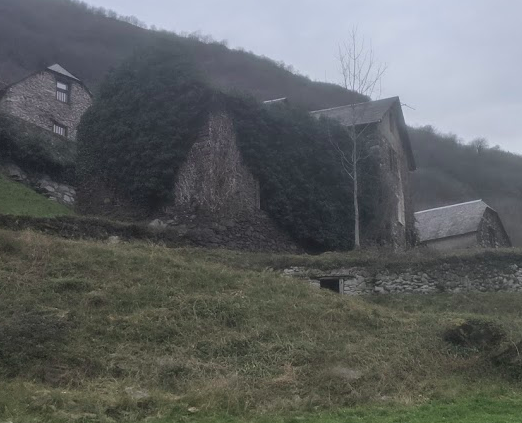We are renovating an old property in France where three walls of an old stone schoolhouse (10ish meters high I'm guessing, maybe more in some places) sit adjacent to the more recent house (1950s). We need to demolish the walls for a few reasons. 1) They present a safety hazard. 2) They block the view. 3) We want to create a large terrace in its place. Two of the walls are not attached to anything, but the third wall is attached to another house--abandoned and not ours--by a kind of short stone bridge which complicates matters further. This wall is not destined for demolition, but it is, of course, attached at the corner to the long wall.
We've brainstormed a few ideas for how to do this safely.
Climb up a ladder, starting at the top and chiseling away at the mortar, thus allowing us to knock down the wall stone by stone. This seems dangerous and slow.
Attach grappling hooks and use a winch to pull down the wall. This seems more efficient and safer for the people involved but more difficult to control where the stones fall. EDIT: No longer considering this given rebound issues: 2
EDIT: Solution 3: use a hand winch and attach to the top stones with a metal band across several stones and then pull down one layer at a time.
We want the stones to fall inward to fill the void where the old foundation used to be and NOT outward risking rolling down the mountain and into other houses.
Anyone have any idea how to approach this demolition? Are we on the right track at all? Any tricks, advice, etc. you could offer?
EDIT: Many have commented below regarding the legal issues involved like protected/historical sites as well as adjacent property considerations. Thank you for thinking of these issues, but we are approaching everything legally and going through all the proper administrative channels (demolition authorization, etc.). France is super serious about these issues, and we don't dare do anything that would jeopardize our neighbors or our project goals!
Picture below is looking up towards the walls which are now covered in vines.



